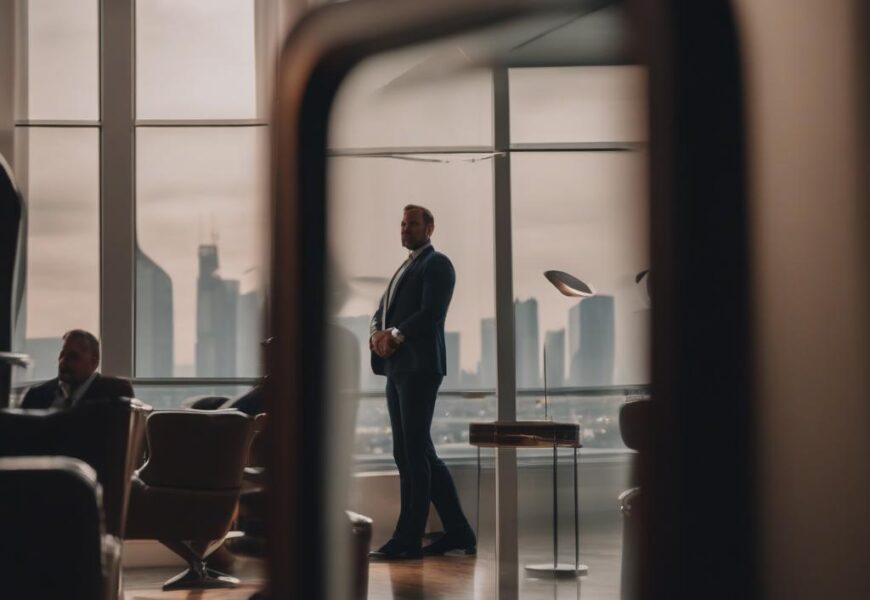-
Table of Contents
- What is a Plane Mirror?
- Characteristics of Plane Mirrors
- Uses of Plane Mirrors
- Personal Grooming
- Optical Instruments
- Decorative Purposes
- Scientific Experiments
- Properties of Plane Mirrors
- Reflection
- Virtual Images
- Image Size
- Multiple Reflections
- FAQs about Plane Mirrors
- Q: How does a plane mirror differ from a concave mirror?
- Q: Can a plane mirror produce a real image?
- Q: How are plane mirrors made?
- Q: Are plane mirrors used in solar power systems?
- Q: Can plane mirrors be used for security purposes?
- Summary
A plane mirror is a type of mirror that has a flat reflective surface. It is the most common type of mirror used in everyday life, found in households, offices, and public spaces. Plane mirrors are widely used for various purposes, including personal grooming, decoration, and scientific experiments. In this article, we will explore the characteristics, uses, and properties of plane mirrors, as well as their impact on our daily lives.
Characteristics of Plane Mirrors
Plane mirrors have several distinct characteristics that set them apart from other types of mirrors:
- Flat Surface: The reflective surface of a plane mirror is perfectly flat, unlike curved mirrors such as concave or convex mirrors.
- Reflectivity: Plane mirrors have a high level of reflectivity, meaning they reflect light with minimal absorption or scattering.
- Virtual Images: When an object is placed in front of a plane mirror, it forms a virtual image that appears to be behind the mirror. This image is the same size as the object and is laterally inverted.
- Angle of Incidence = Angle of Reflection: According to the law of reflection, the angle at which light strikes a plane mirror is equal to the angle at which it reflects.
- Non-Magnifying: Plane mirrors do not magnify or reduce the size of the reflected image. The image appears to be the same size as the object.
Uses of Plane Mirrors
Plane mirrors have a wide range of practical applications in various fields. Let’s explore some of the most common uses:
Personal Grooming
One of the most common uses of plane mirrors is for personal grooming. They are found in bathrooms, bedrooms, and dressing rooms, allowing individuals to see their reflection and groom themselves effectively. Whether it’s applying makeup, styling hair, or checking one’s appearance, plane mirrors play a crucial role in our daily routines.
Optical Instruments
Plane mirrors are extensively used in optical instruments such as telescopes, microscopes, and cameras. They are used to redirect light and create optical paths, enabling the formation of clear and magnified images. For example, in a reflecting telescope, a plane mirror is used to reflect light from the primary mirror to the eyepiece, allowing astronomers to observe distant celestial objects.
Decorative Purposes
Plane mirrors are commonly used for decorative purposes in interior design. They can create an illusion of space, making a room appear larger and brighter. Mirrors are often strategically placed to reflect natural light and enhance the overall aesthetics of a space. Additionally, they can be used as decorative wall hangings or as part of furniture design.
Scientific Experiments
Plane mirrors are essential tools in scientific experiments and demonstrations. They are used to study the behavior of light, understand the principles of reflection, and explore optical phenomena. For instance, in the famous Michelson-Morley experiment, a plane mirror was used to split a light beam and measure the interference pattern, leading to groundbreaking discoveries in the field of physics.
Properties of Plane Mirrors
Plane mirrors possess several unique properties that make them valuable in various applications:
Reflection
Plane mirrors reflect light according to the law of reflection, which states that the angle of incidence is equal to the angle of reflection. This property allows us to see our reflection in a mirror and observe the world around us. The smooth and flat surface of a plane mirror ensures that the reflected image is clear and undistorted.
Virtual Images
When an object is placed in front of a plane mirror, it forms a virtual image that appears to be behind the mirror. This virtual image is laterally inverted, meaning it is a mirror image of the object. For example, if you raise your right hand in front of a plane mirror, the image will show your left hand raised.
Image Size
Plane mirrors do not magnify or reduce the size of the reflected image. The image appears to be the same size as the object. This property is particularly useful in personal grooming, as it allows individuals to see themselves accurately and make precise adjustments.
Multiple Reflections
Plane mirrors can create multiple reflections when arranged in a specific way. By placing two or more mirrors at different angles, an infinite number of reflections can be observed. This effect is often used in artistic installations, creating visually stunning and intricate patterns.
FAQs about Plane Mirrors
Q: How does a plane mirror differ from a concave mirror?
A: A plane mirror has a flat reflective surface, while a concave mirror has a curved inward surface. Plane mirrors reflect light without any focusing effect, whereas concave mirrors can converge light to a focal point, creating magnified or real images.
Q: Can a plane mirror produce a real image?
A: No, a plane mirror cannot produce a real image. It only forms virtual images that appear to be behind the mirror. Real images are formed by curved mirrors, such as concave or convex mirrors.
Q: How are plane mirrors made?
A: Plane mirrors are typically made by coating a flat glass or metal surface with a thin layer of reflective material, such as aluminum or silver. The reflective coating ensures that the mirror reflects light effectively.
Q: Are plane mirrors used in solar power systems?
A: Yes, plane mirrors are used in some solar power systems to redirect sunlight towards a central receiver. This concentration of sunlight helps generate heat or electricity more efficiently.
Q: Can plane mirrors be used for security purposes?
A: While plane mirrors are not commonly used for security purposes, they can be employed in certain surveillance systems. By strategically placing mirrors, blind spots can be eliminated, allowing for better monitoring of an area.
Summary
Plane mirrors are flat mirrors that reflect light according to the law of reflection. They are widely used for personal grooming, optical instruments, decoration, and scientific experiments. Plane mirrors have properties such as virtual image formation, reflection, and image size preservation. They play a significant role in our daily lives, allowing us to see ourselves, observe the world, and explore the principles of light. Understanding the characteristics and uses of plane mirrors helps us appreciate their importance and impact on various fields.




